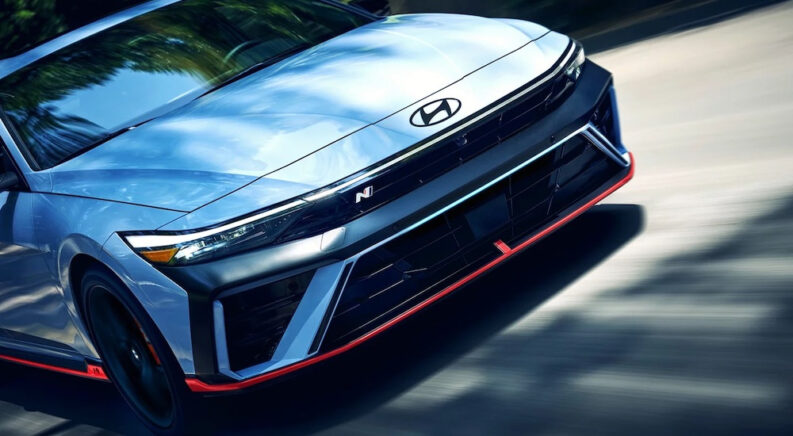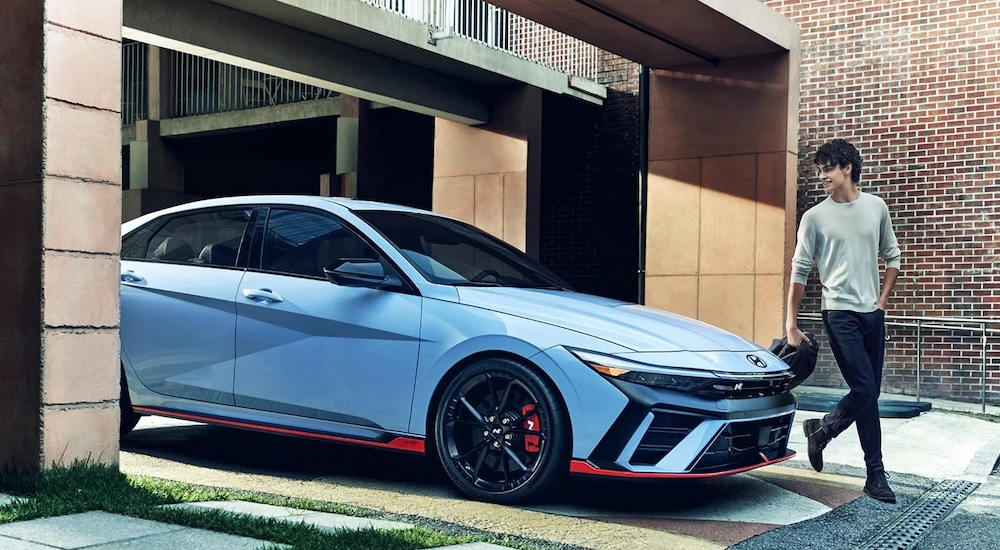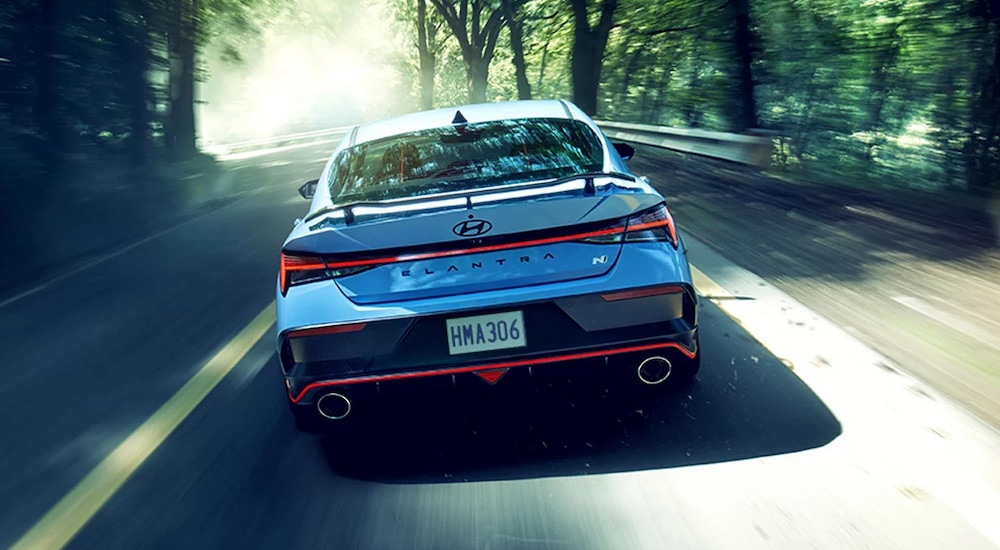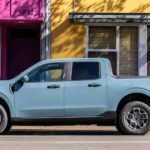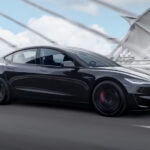Those in the market for a new Hyundai are sure to find a well-rounded lineup of the reliable models that have made the South Korean brand such a popular choice with US drivers. From best-selling SUVs like the Tucson, Palisade, and Kona to the Santa Cruz pickup and cars like the Accent and Sonata, the Hyundai name has become synonymous with value, but what about performance? Take a closer look around your local Hyundai dealer, and you’ll start to notice one little letter that makes all the difference when it comes to upping the fun factor when you’re behind the wheel: N. Since 2012, Hyundai’s N performance brand has been hard at work transforming established models into one-of-a-kind performance machines. From the sport compact Elantra N and Kona N to the Ioniq 5 EV N and the hasty hot-hatch that is the Veloster N, these performance models are making drivers see Hyundai in a whole new light.
Hyundai’s N sub-brand is guided by three key pillars: Corner Rascal, Everyday Sports Car, and Race Track Capability. The first is intended to strike a balance between fun and safety, allowing drivers to aggressively tackle corners without having to worry about ending up in the wall. Everyday Sports Car reflects the idea that cars like the Elantra N should not only provide a thrilling, sporty ride, but also be a practical choice for everyday driving, while the concept of Race Track Capability posits that drivers should be able to enjoy a ready-made racer right out of the box without the need for any expensive upgrades. So, how did the Hyundai N brand come to be, what models have been given the N treatment, and what sort of fun does the 2024 Elantra N have in store? Let’s dive in and see how a German racetrack, a South Korean R&D facility, and a team of experienced automotive experts combined to give Hyundai a high-performance makeover.
From Nürburgring to Namyang
In the world of performance-focused sub-brands Hyundai’s N is something of an outlier, at least when it comes to the name. While automakers like Volkswagen R, Audi RS, Ford RS and Toyota TRD invoke the racing spirit with the use of the letter R (or “M” in the case of BMW’s motorsport-inspired offshoot), Hyundai’s N brand takes a little more decoding. The moniker is actually inspired by two different places which, despite being located some 5,000 miles apart, are inexorably linked in the history of the N brand.
Lovingly referred to as “The Green Hell,” Germany’s Nürburgring is actually a lot closer to heaven in the mind of most performance enthusiasts. The storied racetrack is where the N story really began back in 2007 when a private racing team from Schumann Motorsport piloted a Hyundai Coupé to a first place finish in the SP4 class of the Nürburgring 24 Hours race. The Coupé’s podium appearance caught the attention of the Hyundai brass, inspiring a journey that would lead directly to our second N: the automaker’s Namyang, South Korea R&D Center. It was there that Hyundai gathered its best and brightest engineering minds and tasked them with designing a new line of race-ready models.
The early N team was a murderer’s row of some of the top names in high-performance automotive engineering. From former BMW M chief Albert Biermann and Mercedes AMG member Klaus Köster to BMW sales and marketing whiz Thomas Schemera, Hyundai set the new N division up for plenty of success with some deft hiring. In order to truly put the early N prototypes through their paces, the team lobbied Hyundai to create a bespoke test track at the Namyang R&D Center. Divided into three parts, the Namyang track was purpose-built for high-performance models like the Elantra N. From the 1.3-mile high-speed handling track and 0.9-mile multi-purpose handling track to the 0.7-mile low-friction handling track, the facility was designed to mimic the tight chicanes and hairpin turns of the Nürburgring itself.
The first model to emerge from the Namyang was the i20 WRC, a concept car that also served as Hyundai’s entrée into the World Rally Championship (WRC). The i20 WRC would make its World Rally Championship debut at the 2014 Rallye Monte Carlo and truly announce its arrival later that season with a victory at the Rallye Deutschland. The experience gained from the WRC would inform the design of the N brand’s next project, the Racing Midship line of concept cars. Based on the 2012 Hyundai Veloster, the RM14 (and later models like the RM15, RM16, and RM19) were more than just auto-show-ready daydreams; they were Hyundai’s “rolling labs” that served as a vital testing ground for new and emerging automotive technology like active spoilers, carbon-reinforced plastic, aluminum space frames and powerful four-cylinder turbocharged engines aided by electric superchargers.
The Elantra Earns an N
The N sub-brand made its official debut at the 2014 Frankfurt Motor Show, but the first mass-produced model wouldn’t arrive until 2017, when the i30 N hit the European market. That was followed by the Veloster N in 2018 and a five-door coupe version of the i30 N known as the i30 N Fastback. Hyundai continued to improve the N lineup, upgrading the Veloster N with a dual-clutch transmission and a new N-Grin Shift (NGS) system that improved acceleration in 2020. The i20 N came next and soon replaced the i20 WRC as the brand’s go-to WRC competitor. The Kona crossover (and later the IONIQ 5 EV) would also get the N treatment in 2021, but it was the arrival of the Elantra N that would really put the industry on notice.
Based on the seventh-generation Elantra, the 2021 Elantra N immediately won over drivers with its 2.0-liter turbocharged engine that could hit 60 mph in just 4.8 seconds thanks to its 276 horsepower and 289 lb-ft of torque. An independent multi-link suspension replaced the typical torsion beam found on the standard Elantra, while stiffer sway bars and reinforced strut mounts delivered a tighter, more responsive ride. High-performance brakes, wider tires, a noisier exhaust, and a limited-slip differential with electronic torque vectoring further distinguished the N from the base model, as did the sedan’s adjustable toe and camber.
That said, the addition of three N Mode functions really makes the Elantra N feel like a modern performance machine. N Power Shift (NPS) optimizes the shifting response for improved acceleration, while N Track Sense Shift (NTS) kicks the transmission into its race track settings. The most compelling might be N Grin Shift (NGS), a fun little feature that allows the engine to be over-boosted by 290 ps for up to 20 seconds.
The success of Hyundai’s N brand has led to the brand introducing a new variation, dubbed the N Line. While models like the Elantra N Line share the same slick, race-inspired design as their N cousins, they use a standard engine and lack some of the performance components that have led to so much success at the track. Drivers might miss out on the modified engines, custom gearboxes, and race-tuned suspension systems that define the N models, but the N Line allows them to set themselves apart from the crowd with an eye-catching ride that looks like it belongs on a WRC podium.
Take the 2024 Elantra N Line for example. Priced at just $28,465, the N Line costs $5,000 less than the full-on N while boasting a number of impressive upgrades. The engine gains a turbocharger that’s good for 201 hp and 195 lb-ft of torque and a seven-speed dual-clutch transmission that provides a noticeable step-up in acceleration when compared to the other Elantra trims.
The Latest N Greatest
The 2024 Elantra N represents the culmination of more than 12 years of high-performance innovation. Packed with a 276-hp turbocharged 2.0-liter engine mated to a six-speed manual (or available eight-speed automatic) transmission, the Elantra N is significantly more powerful than its closest sport compact competitors in the Honda Civic Si at 200 hp and the Volkswagen Jetta GLI at 228 hp. The Elantra N still comes packed with those performance upgrades and advanced tech like NGS that has made the sedan such a popular option, but Hyundai has also made some important upgrades moving into the 2024 model year.
New front and rear bumper covers, updated headlights, and taillights are all a part of the Elantra N’s mid-cycle refresh, as are two new 19-inch wheel designs. Hyundai has also made some prominent additions to the cabin, redesigning the steering wheel and shift knob in a bid to keep the interior looking up-to-date. Of course, a performance-oriented model like the Elantra N is always going to be measured by what’s under the hood. To that end, Hyundai has loaded the 2024 model with new steering components, rear-suspension bushing, and a reinforced engine mount while also updating the car’s performance-related software. The result is an Elantra that handles even better than its predecessors while boasting the sort of throttle response that’ll have you pining for your next track day.
While its potent engine, stylish design, and high-performance heritage make the sedan a standout in its class, the most compelling argument for investing in an Elantra N might come down to a simple piece of paper. Like all Hyundai models, the Elantra N is backed by one of the industry’s most generous warranty programs. The comprehensive 10-year/100,000-mile powertrain warranty allows customers to enjoy the ride without having to worry about costly repairs to some of the vehicle’s most expensive components while the five-year/60,000-mile limited warranty covers every other corner of the sporty sedan. Hyundai further separates itself from the pack with complimentary maintenance for the first three years or 36,000 miles of ownership. This perk not only ensures that the Elantra N is always in tip-top shape, but it’ll also go a long way towards improving the overall resale value should you decide to upgrade to the latest model.
The Elantra N’s Thrilling Performance Continues
The story of Hyundai’s N sub-brand is one of innovation and risk, trials and triumph. Known for its budget-friendly lineup of cars, trucks and SUVs, Hyundai’s adventures in the performance segment might take some drivers by surprise. Yet the South Korean automaker has managed to defy all the expectations, producing a line of exciting, athletic models that can go toe-to-toe with some of the market’s most established performance brands. True to its reputation, Hyundai’s Elantra N isn’t just one of the most compelling models in the sport compact segment; it’s also one of the most affordable.
The sedan’s value is only increased by its impressive fuel efficiency, getting 21 MPG in the city and 29 MPG on the highway. These stats, plus the vehicle’s long list of advanced driver-assistance systems and the 276-horsepower engine, make the Elantra N a well-rounded choice for any driver in the market for a reliable daily driver that can still deliver some thrills.

